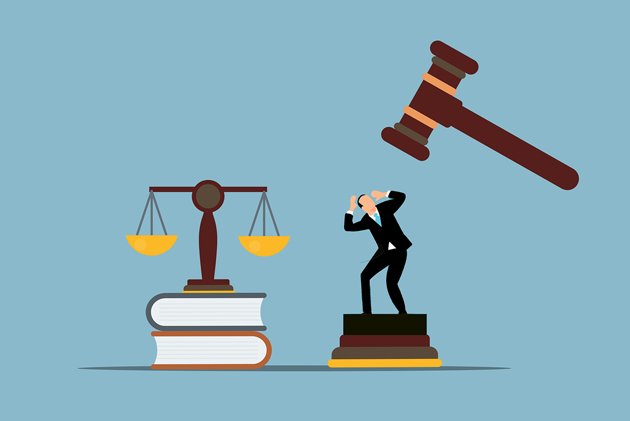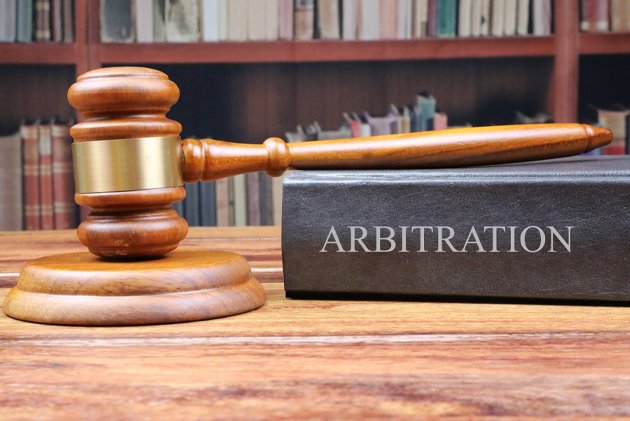June 17, 2025

Press Freedom in the Digital Age: World Press Day 2025 and the Impact of Artificial Intelligence
Introduction
World Press Freedom Day, celebrated annually on May 3rd, stands as a global reminder of the fundamental importance of press freedom in democratic societies. The 2025 theme, "Reporting in the Brave New World – The Impact of Artificial Intelligence on Press Freedom and the Media," addresses the emerging challenges and opportunities that AI technologies present to journalists and media organizations worldwide. This research note examines the historical foundations of press freedom, key legal frameworks at international and national levels, landmark judicial decisions that have shaped press freedom doctrines, and the implications of artificial intelligence for the future of journalism.
World Press Freedom Day: Origins and Significance
World Press Freedom Day was proclaimed by the UN General Assembly in December 1993, following a recommendation by UNESCO's General Conference. The date of May 3rd was chosen to commemorate the anniversary of the Declaration of Windhoek - a statement of press freedom principles crafted by African journalists in 1991. The day serves multiple purposes: to celebrate fundamental principles of press freedom, to evaluate the state of press freedom globally, to defend media independence, and to pay tribute to journalists who have lost their lives in the pursuit of truth. As noted by UN Secretary-General António Guterres in his 2025 message for World Press Freedom Day: "In a world plagued by conflict and division, World Press Freedom Day highlights a fundamental truth: Freedom for people depends on freedom of the press." He emphasized that "free and independent journalism is an essential public good... the backbone of accountability, justice, equality and human rights".
International Legal Framework for Press Freedom
Universal Declaration of Human Rights
The cornerstone of the international legal framework for press freedom is Article 19 of the Universal Declaration of Human Rights (UDHR), which states: "Everyone has the right to freedom of opinion and expression; this right includes freedom to hold opinions without interference and to seek, receive and impart information and ideas through any media and regardless of frontiers." This powerful articulation establishes that freedom of expression is not limited by national boundaries and explicitly includes all forms of media as protected channels for the exchange of ideas and information.
International Covenant on Civil and Political Rights
Article 19 of the International Covenant on Civil and Political Rights (ICCPR) further reinforces these rights, providing that "freedom of expression includes the freedom to seek, receive and impart information and ideas of all kinds, regardless of frontiers, and through any media". The UN Human Rights Committee has emphasized that this protection is so fundamental that "a general reservation to the paragraph would be incompatible with the object and purpose of the Covenant".
UNESCO's Role
UNESCO plays a central role in promoting press freedom globally. Through various initiatives, UNESCO works to create an environment where journalists can work safely and independently. The organization has described freedom of information as "a fundamental human right and the touchstone of all the freedoms to which the United Nations is consecrated".
Press Freedom in Constitutional Frameworks
Indian Constitutional Framework
In India, the freedom of press is not explicitly mentioned in the Constitution but is considered an integral part of the freedom of speech and expression guaranteed under Article 19(1)(a). As articulated by the Supreme Court of India in numerous judgments, the freedom of the press is regarded as "the mother of all other liberties" in a democratic society. The Supreme Court of India, in Express Newspapers v. Union of India, clarified that while the Constitution does not expressly mention 'freedom of press,' it is included in Article 19(1)(a) which guarantees freedom of speech and expression [9]. This right is subject to reasonable restrictions under Article 19(2) in the interests of sovereignty and integrity of India, security of the State, friendly relations with foreign States, public order, decency or morality, contempt of court, defamation, or incitement to an offense.
United States Constitutional Framework
In the United States, press freedom is explicitly protected by the First Amendment to the Constitution, which states: "Congress shall make no law... abridging the freedom of speech, or of the press." This provision has been interpreted by the U.S. Supreme Court to provide robust protection for journalistic activities, with limitations defined through a rich body of case law.
Landmark Judicial Decisions on Press Freedom
Indian Jurisprudence
The Supreme Court of India has consistently upheld the freedom of the press through numerous landmark judgments:
1. Romesh Thappar v. State of Madras AIR 1950 SC 124, 1950 SCR 594: This early judgment laid the foundation for press freedom in India. The Court held that "freedom of speech and expression includes freedom of propagation of ideas, and that freedom is ensured by the freedom of circulation". The Court emphasized that liberty of circulation is as essential to freedom of expression as liberty of publication.
2. Express Newspapers v. Union of India AIR 1958 SC 578, 1959 SCR 12: These cases reinforced that the freedom of press is implicit in the guarantee of freedom of speech and expression. The Court held that any attempt to restrict the free circulation of a newspaper would constitute a violation of freedom of speech.
3. Indian Express Newspapers v. Union of India (1985) 1 SCC 641, 1985 SCR 287: The Court described the right to freedom of press as "a pillar of individual liberty which has been unfailingly guarded by the Courts".
4. In Re: Harijai Singh (1996) 6 SCC 466, 1996 INSC 1062: The Court emphasized that press freedom "has always been regarded as an essential pre-requisite of a Democratic form of Government" and is "necessary for the mental health and well-being of the society".
5. Vinod Dua v. Union of India & Ors., (2021) 7 SCC 359, 2021 INSC 304: The Court recognized that the purpose of the press is to advance public interest by publishing facts and opinions without which a democratic electorate cannot make responsible judgments. The Court acknowledged that newspapers carry material which may not be palatable to governments and that journalists must be critical of government actions to expose weaknesses.
6. Yashwant Sinha & Ors. v. Central Bureau of Investigation, (2019) 6 SCC 1, 2019 INSC 505: The Court recalled the historical importance of press freedom in India's independence movement and quoted Jawaharlal Nehru: "I would rather have a completely free press with all the dangers involved in the wrong use of that freedom than a suppressed or regulated press"
7. Kaushal Kishor v. State of Uttar Pradesh & Ors., (2023) 1 SCC 571, 2023 INSC 4: In this recent judgment, the Court reaffirmed that "the freedom of speech is the foundation of all democratic organisations" and highlighted the importance of "free flow of opinion and ideas" for effective governance.
8. Anuradha Bhasin v. Union of India & Ors., (2020) 3 SCC 637, 2020 INSC 31: This judgment addressed restrictions on press freedom in the context of internet shutdowns, reaffirming that freedom of the press is included within the freedom of speech and expression guaranteed by Article 19(1)(a) of the Constitution.
9. Union of India v. Naveen Jindal and Anr., (2004) 2 SCC 510, 2004 INSC 53: The Court emphasized that freedom of speech and expression includes the right to propagate one's views through print media or other communication channels, and that "freedom to air one's views is the lifeline of any democratic institution"
10. Subramanian Swamy v. Union of India, Ministry of Law & Ors., (2016) 7 SCC 221, 2016 INSC 427: This case, while dealing with defamation, discussed the importance of balancing freedom of expression with protection of reputation. These judgments collectively establish a robust framework for press freedom in India, recognizing its fundamental importance to democracy and its protection under the constitutional guarantee of freedom of speech and expression.
United States Jurisprudence
The U.S. Supreme Court has shaped press freedom doctrine through several groundbreaking decisions:
1. Near v. Minnesota 283 U.S. 697 (1931): This landmark case established the principle against prior restraint, significantly limiting the government's ability to censor publications before they are released. The Court struck down a Minnesota law that allowed officials to shut down "malicious, scandalous and defamatory" newspapers. Chief Justice Hughes pronounced that prior restraints on publication are presumed to violate the First Amendment, though he noted exceptions might exist for matters such as troop movements during wartime, obscenity, or incitement to violence.
2. New York Times v. Sullivan 376 U.S. 254 (1964): Perhaps the most significant press freedom case in U.S. history, this decision established the "actual malice" standard for defamation claims brought by public officials. The Court held that to recover damages, public officials must prove that false statements were made with "knowledge of falsity or reckless disregard for the truth". This standard provided crucial breathing space for reporting on matters of public interest, particularly criticism of government officials.
3. New York Times v. United States 403 U.S. 713 (1971): Known as the "Pentagon Papers" case, this ruling reaffirmed the strong presumption against prior restraint. The Court rejected the Nixon administration's attempt to prevent the publication of classified documents about the Vietnam War, establishing that the government carries "a heavy burden" to justify prior restraint of publication.
United Kingdom Jurisprudence
The UK has developed its own distinctive approach to press freedom through several influential cases: 1. Reynolds v. Times Newspapers [2001] 2 AC 127: This decision established the "Reynolds privilege" (or "Reynolds defense"), which extended qualified privilege to responsible journalism on matters of public interest. The House of Lords outlined ten factors to consider when determining if the privilege applies, including the seriousness of the allegation, the source of the information, the steps taken to verify it, and whether comment was sought from the plaintiff.
2. Jameel v. Wall Street Journal Europe [2006] UKHL 44: This case revitalized the Reynolds defense by clarifying that the ten factors should not be treated as a rigid checklist but rather as considerations that may apply in different combinations depending on the circumstances. The House of Lords emphasized the importance of protecting serious journalism on matters of public interest [21] [22].
International and Other National Jurisprudence
1. Federation of African Journalists v. Gambia (ECOWAS Court): The Community Court of Justice of the Economic Community of West African States held that the offenses of sedition, false news, and criminal defamation in The Gambia's Criminal Code violated the right to freedom of expression under international law. The Court found that criminal sanctions for these offenses had "a chilling effect that may unduly restrict the exercise of freedom of expression of journalists"
2. Lange v. Atkinson (New Zealand): The New Zealand Court of Appeal expanded the defense of qualified privilege to protect political statements, creating guidelines that broadened protections for the press when reporting on political matters.
Artificial Intelligence and Press Freedom: The 2025 World Press Day Theme
The 2025 World Press Freedom Day theme focuses on the profound impact that artificial intelligence is having on journalism and press freedom. As noted by UN sources, "AI's impact on information gathering, processing, and dissemination is profound, presenting both innovative opportunities and serious challenges".
Opportunities Presented by AI
AI can make information more accessible globally, allowing more people to communicate across borders and changing how information flows. It can help media organizations by automating routine tasks, improving efficiency, and managing increasing content demands. In democratic processes, AI can assist with fact-checking and fighting disinformation, providing tools to journalists and voters to support informed participation.
Challenges and Risks
However, AI also introduces significant challenges to press freedom. AI can be used to spread false or misleading information and increase online hate speech. The technology enables the creation of deepfakes and other synthetic content that can undermine trust in democratic systems. Some actors use AI for mass surveillance of journalists and citizens, creating a "chilling effect" on freedom of expression. AI also enables new forms of censorship. Big tech platforms employ AI to filter and control visible content, making them powerful gatekeepers of information. As generative AI tools reuse journalistic content without fair compensation, they divert income from independent media to tech platforms and AI companies, potentially weakening the financial health of quality journalism. There are growing concerns that AI may make global media too similar, reducing diverse viewpoints and pushing out smaller media outlets.
Global Responses and Governance
Recognizing these challenges, the international community has begun developing frameworks to govern AI in ways that protect freedom of expression. This initiative emphasizes the importance of addressing problems caused by technology while still protecting privacy and freedom of expression. In March 2024, the General Assembly adopted a landmark resolution on promoting "safe, secure and trustworthy" AI systems, highlighting the need to respect, protect, and promote human rights in AI development and deployment. UNESCO has developed guidance on the ethical use of AI, including considerations for its impact on media and information ecosystems. Secretary-General António Guterres has emphasized that "AI must be shaped in a way that is consistent with human rights and puts facts first," highlighting the importance of governing AI technology rather than letting it govern us.
Conclusion
As we observe World Press Freedom Day 2025, the interplay between press freedom and artificial intelligence represents both a critical challenge and an opportunity for the global media landscape. The historical and legal foundations of press freedom—built through international declarations, constitutional provisions, and landmark court decisions—provide essential principles that must guide our approach to AI in journalism. Press freedom remains "the mother of all other liberties" in democratic societies, serving as the cornerstone of accountability, informed citizenry, and protection against abuse of power. In the era of AI, preserving this freedom requires careful balancing of technological innovation with ethical considerations and human rights protections. As UN Secretary-General Guterres aptly noted, the goal must be to "push for a more humane information ecosystem" where technology serves humanity's best interests rather than undermining fundamental freedoms. This will require coordinated efforts from governments, tech companies, media organizations, and civil society to establish frameworks that harness AI's potential while safeguarding the essential role of free and independent journalism in democratic societies.
References
This article draws upon numerous UN documents, judicial decisions from courts around the world, and scholarly analyses of press freedom in the digital age. Key sources include the Universal Declaration of Human Rights, landmark Supreme Court judgments from India and the United States, decisions from courts in the United Kingdom and other jurisdictions, and recent UN statements on AI governance and press freedom.
Sources
Web Articles
- un: World Press Freedom Day - EN | United Nations
- un: World Must 'Push for More Humane Information Ecosystem', Says ...
- columbia: New York Times Co. v. Sullivan ... - Global Freedom of Expression
- columbia: Federation of African Journalists ... - Global Freedom of Expression
- un: General Assembly
- un: International Day of Democracy | United Nations
- un: Background | United Nations
- un: A/77/287 General Assembly
- un: Freedom of Expression, a Fundamental Human Right | United Nations
- un: General Assembly adopts landmark resolution on artificial intelligence
- columbia: New York Times Co. v. United States - Global Freedom of Expression
- columbia: Toward a Theory of Prior Restraint: The Central Linkage
- columbia: Legal Foundations of Press Freedom in the United States
- columbia: Lange v. Atkinson - Global Freedom ... - Global Freedom of Expression
columbia: London Conference Papers | Global Freedom of Expression
nter took a galley of type and scrambled it to make a type specimen book. It has survived not only five centuries, but also the leap into electronic typesetting, remaining essentially unchanged. It was popularised in the 1960s with the release of Letraset sheets containing Lorem Ipsum passages, and more recently with desktop publishing software like Aldus PageMaker including versions of Lorem Ipsum.
Authored By:
Ms. Nivedita Chauhan, Advocate
Founder & Managing Partner



